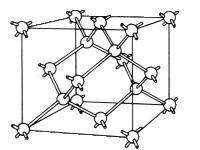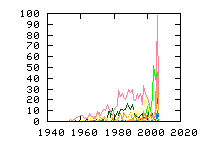« Previous
1
Next »
(5 hits, 1/1)
Showing
10, 25, 50, 100, 500, 1000, all papers per page.
Sort by:
last publication date,
older publication date,
last update date.
- 1. J. Appl. Phys. 99, 011101 (2006) , “Degradation of hexagonal silicon-carbide-based bipolar devices”, M. Skowronski and S. HaOnly a few years ago, an account of degradation of silicon carbide high-voltage p-i-n diodes was presented at the European Conference on Silicon Carbide and Related Compounds (Kloster Banz, Germany, 2000). This report was followed by the intense effort of multiple groups... (Read more)
- 2. Nature 430, 1009 (2004) , “Ultrahigh-quality silicon carbide single crystals”, Daisuke Nakamura, Itaru Gunjishima, Satoshi Yamaguchi, Tadashi Ito, Atsuto Okamoto, Hiroyuki Kondo, Shoichi Onda, Kazumasa TakatoriSilicon carbide (SiC) has a range of useful physical, mechanical and electronic properties that make it a promising material for next-generation electronic devices1,2. Careful consideration of the thermal conditions3-6 in which SiC {0001} is grown has resulted in improvements in crystal diameter and quality: the quantity of macroscopic defects such as hollow core dislocations (micropipes)7-9, inclusions, small-angle boundaries and longrange lattice warp has been reduced10,11. But some macroscopic defects (about 1–10 cm-2) and a large density of elementary dislocations (,104 cm-2), such as edge, basal plane and screw dislocations, remain within the crystal, and have so far prevented the realization of high-efficiency, reliable electronic devices in SiC (refs 12–16). Here we report a method, inspired by the dislocation structure of SiC grown perpendicular to the c-axis (a-face growth)17, to reduce the number of dislocations in SiC single crystals by two to three orders of magnitude, rendering them virtually dislocation-free. These substrates will promote the development of high-power SiC devices and reduce energy losses of the resulting electrical systems. (Read more)
- 3. Phys. Rev. Lett. 92, 175504 (2004) , “Driving Force of Stacking-Fault Formation in SiC p–i–n Diodes”, S. Ha, M. Skowronski, J. J. Sumakeris, M. J. Paisley, M. K. DasThe driving force of stacking-fault expansion in SiC p–i–n diodes was investigated using optical emission microscopy and transmission electron microscopy. The stacking-fault expansion and properties of the partial dislocations were inconsistent with any stress as the... (Read more)
- 4. Physica B 116, 583-593 (1983) , “Investigations of well defined dislocations in silicon”, H. Alexander, C. Kisielowski-Kemmerich, E. R. WeberThe velocity v of dislocation half-loops introduced into swirl-free floating-zone grown undoped silicon has been measured at 420°C in the resolved shear stress range 30 <τ<300 MPa. Clearly impurity atoms interact with dislocations in this material. Using the starting value of v we found the two types of 60° dislocations, which are distinguished by the sequence of their partials, to have different velocities. Furtheron the velocity depends not only on τ, but also on the elastic strain of the lattice. In the second part the papers review EPR spectroscopy of plastically deformed silicon and collects new results on the activity of dislocations in this material as trapping / recombination centers (decay of photo-EPR, photoluminescence, EBIC microscopy and photoplastic effect). (Read more)
- 5. J. Phys. Chem. Solids 31, 1381 (1970) , “The Annealing of the EPR-Signal Produced in Silicon by Plastic Deformation”, F. D. Wohler and H. AlexanderW. SanderIn silicon an EPR signal is produced by plastic deformation. The annealing behavior of this signal has been investigated, and the dislocation density and structure has been studied by the etch pit technique and by electron microscopy. The EPR-signal anneals in one stage with an activation energy of... (Read more)
« Previous
1
Next »
(5 hits, 1/1)
Showing
10, 25, 50, 100, 500, 1000, all papers per page.
Sort by:
last publication date,
older publication date,
last update date.
All papers (3399)
Updated at 2010-07-20 16:50:39
Updated at 2010-07-20 16:50:39
(view as: tree
,
cloud
)
| 1329 | untagged |
Materials
(111 tags)
Others(101 tags)
Technique
(46 tags)
Details
(591 tags)
Bond(35 tags)
Defect(interstitial)(18 tags)
Defect(vacancy)(15 tags)
Defect-type(19 tags)
Element(65 tags)
Energy(8 tags)
Isotope(56 tags)
Label(303 tags)
Sample(17 tags)
Spin(8 tags)
Symmetry(15 tags)

